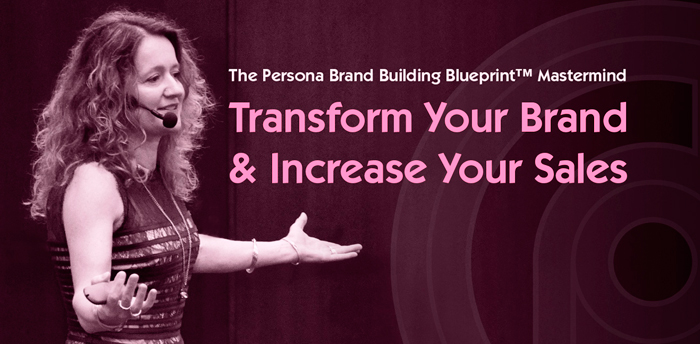Brand Stories: Top 7 Tips for Creating a Great Brand Story
Your brand is the most powerful asset your business owns. A compelling brand will drive sustainability and long-term profits, increasing your market share and elevate your business above the competition. In order to develop, maintain, and grow your brand, you need an effective brand strategy that combines several elements—and one of the most crucial of those elements is your brand story. To quote Seth Godin “marketing is no longer about the stuff that you make but about the stories you tell.”
What is a brand story? It’s more than a quick background sketch on your About page. A great brand story taps into the emotions of your target audience, tying your company values to your brand promise and conveying the overall brand experience. Effective brand stories are evocative, relevant, and highly memorable, with the power to connect with your primary customer in a way that supports building a strong and loyal customer base.
Here are some of the elements we include or consider when creating our clients brand stories using our Brand Story Selling System™. These seven tips will also help you create your brand story so that it engages your customers, encourages brand loyalty, and ultimately helps you boost your bottom line.
Top 7 Tips for Creating a Compelling Brand Story
1. Know Your Brand’s Big “Why”
When creating your brand story, it’s essential to know your brand inside and out. This includes not only your production values and target audiences, but the reasons your brand exists. Many companies make the mistake of focusing a brand story on the what or the how of their products or services—what they do, how they help people or features and benefits—when the focus should really be on why you do what you do.
Emphasising the “big why” of your brand allows you to create an emotionally compelling, human-centric brand story. It’s important here to differentiate a brand story from marketing collateral, the aspects of your brand that convey the benefits of your products and services to your customers. The purpose of your brand story is to bring your brand to life, in a way that people can connect with and actually relate to. When you highlight the big “why” of your brand, it’s easier to create that emotional connection.
2. Set the Right Tone
The tone of your brand story should reflect the values, emotions, and experiences you want people to associate with your brand. Whether your brand is elegant and sophisticated, timeless and traditional, fun and modern, or serious and influential, your brand story needs to capture that tone with appropriate wording and imagery that reinforces your brand values.

Image via www.smilesquared.com
One effective method of brand storytelling that conveys a relevant tone is a heartfelt message from brands that are committed to making a difference in the world. Toothbrush brand Smile Squared serves as an excellent example of this—their About page tells the story of how a husband-and-wife team founded the company after travelling to disadvantaged countries and witnessing the impact of a lack of basic dental care firsthand. Smile Squared is built on a “buy one, give one” philosophy: for every toothbrush a customer buys, the company donates a toothbrush to a child in need.
Fun and humour can also create a memorable, engaging brand story that sets the tone for the brand experience. For example, DollarShaveClub.com created a fun and unique video that tells the story of their brand, which went viral and currently has more than 18 million views on YouTube.
3. Tie into Your Provenance
Placing a focus on the home location of your brand can make for a powerful and engaging brand story. Provenance is the origin location of your brand, which can mean either the geographic area of your business, or the original country or city of the company’s founders.
Many effective brands have built a brand story around provenance. The story can be general, such as brands that emphasise cultural values and originate from small towns, or region-specific, such as brand values that are tied to the perceptions of their country of origin. L’Oreal is a well-known example of brand provenance. The cosmetics company consistently ties their brand story and platform to Paris, focusing on the chic and stylish reputation of the French city to differentiate the brand.
4. Build a Brand Hero
Brand stories that revolve around a central character can create a powerful connection with your customers and strengthen brand loyalty. There are several different types of brand heroes that can be used to tell a brand story. Some of these include:
- Fictional characters (Keebler Elves, Tony the Tiger)
- Brand mascots (Pillsbury Dough Boy, Churchill the Bulldog)
- Founder characters (Colonel Sanders)
- Brand personas (Google Chrome)
A well-crafted brand hero allows your customers to connect directly and personally to your brand. The best character brand stories encapsulate your brand values and promise, and personify the aspects of your brand that set you apart from the competition.
5. Keep Your Brand Promise Consistent
Brand storytelling is a concept that should extend beyond the About page of your website. The most effective brand storytelling is woven into multiple aspects of an overall brand strategy, including social media, marketing campaigns, and even your brand tagline and slogans. In order to make your brand story work for you, it’s essential to ensure that your brand promise is presented consistently across all your brand collateral and platforms.
The Red Bull brand is an excellent example of brand story consistency. With brand values that include freedom, adventure, and extreme lifestyles consistent with the company’s energy drink offerings, Red Bull marketing campaigns continually reflect those values and tell the story of the brand. The strong sense of challenge and adventure that pervades the Red Bull story creates an immediate connection with the brand’s target audience that customers can expect from every interaction.
6. Be Authentic
Authenticity is a primary key to an effective brand story. An authentic brand story is true to your company’s values and mission statement, aligning strongly with your products and services while remaining genuine and heartfelt. Brand stories that attempt to sell, or those that are obviously disassociated from the brand, will fail every time with audiences.
Being authentic doesn’t mean there is no room for creativity in your brand story. It simply means that the your core brand values embodied by your brand’s storytelling are a true reflection of what your brand offers, and that every brand touchpoint reinforces the ideals presented by your story.
7. Make Your Brand Story Shareable
Finally, an effective brand story is one that can be easily shared. A great brand story should be a central core of your overall brand strategy—not merely relegated to your About Us page, but highlighted through a variety of media and collateral and displayed in ways that allow your customers to spread the word and get involved.
In addition to telling your brand story through words, you can create videos, post images or quotes, and develop taglines that capture the essence of your brand storytelling to help the message spread. Particularly for modern audiences, a great brand story is the best way to create a connection and make customers want to share your story with the world. Shareable brand stories help you harness word of mouth and elevate your brand to new heights of success.
You may also like:
• Rebranding Strategy: Why Your Rebrand Must Embrace Storytelling
• Creating New Brands: Top 10 Tips for Brand Success
• Brand Personality: Is Your Brand’s Character Big Enough to Compete?
• Packaging Design: How to Make it into an Irresistible Customer Brand Magnet
• Brand Strategy: 6 Lessons Learned from Tourism Queensland, One of the Most Successful Brand Campaigns Ever!
So, what do you think?
• Is your brand story confined to your About page?
• What is the bit “why” of your brand? How can you articulate it in a compelling brand story?
• Does your existing brand story accurately reflect the tone of your brand?
• How can you effectively tie your brand to provenance?
• What type of brand hero would best represent your brand?
• Is your brand story authentic and honest? Is it consistent?
• How many ways can you share your brand story with your audience?
Feel free to share your thoughts in the comments. We’d love to hear from you!































